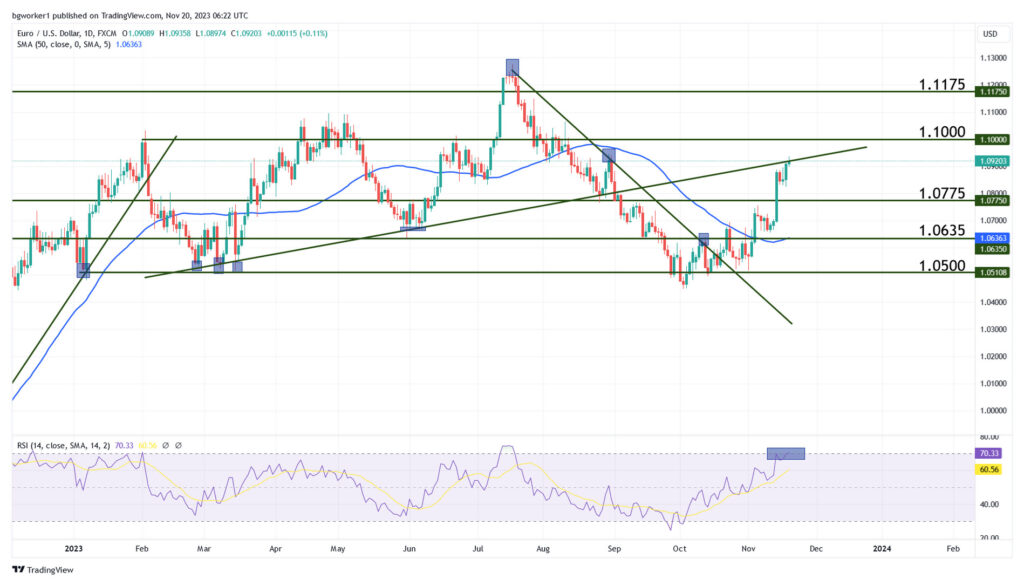Dollar Dips as Markets Digest Weak Inflation Data
EUR/USD Bulls Are Getting Ready to Take a Break. But When?
The US Dollar has started to decline against most of its major counterparts following recent U.S. economic data that has been weaker than expected. Last week’s highlight was the inflation report that missed expectations by a hefty margin. This has led markets to largely discount the possibility of further rate hikes by the Fed. Also, the cycle is following its normal course as now market participants are starting to speculate on when the Federal Reserve might start reducing rates.
The greenback is feeling the effects of the economic slowdown. The Australian dollar rose to a three-month high against the weakened U.S. Dollar. The Chinese Yuan achieved three-month highs, supported by actions from China’s central bank. During Asian trading hours, the dollar index (DXY) fell to 103.53, its lowest point since September 1st.
Attention is now shifting towards the timing of potential rate cuts. Futures markets are currently indicating a 30% chance that the Federal Reserve might start cutting rates as early as March next year, as per the CME’s FedWatch tool.
Key Data for the Week Ahead
The market is feeling the approaching of Thanksgiving, which will be celebrated Thursday in the United States. There are only three notable U.S. releases this week. The FOMC Meeting Minutes will come out Tuesday at 7:00 pm GMT, offering insights into the reasons that determined the most recent rate decision.
The U.S. Manufacturing PMI and Services PMI will both come out Friday at 2:45 pm GMT. These are leading indicators of economic health, focused on their respective sectors, with medium impact.
The German and French Manufacturing and Services PMIs will be released early-morning on Thursday and the final euro-focused release will be the German IFO Business Climate survey that’s scheduled for release on Friday at 9:00 am GMT.
Technical Outlook – EUR/USD
The pair is currently trading at an important juncture and two factors can influence its behavior. The price is approaching the long-term bullish trend line that was breached in late-August – this can trigger a reaction even when it is tested from below.
The other factor is the Relative Strength Index, which is touching its overbought level. This suggests that the current uptrend may be overextended and that a pullback may soon happen.
If the bulls manage to overcome the two barriers (the trend line and RSI’s position), the next destination will be the crucial resistance at 1.1000. This is a psychological level (big round number) and a technical resistance because the price reacted to it in the past. The chances of a pullback will drastically increase if the pair reaches this hurdle.
